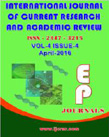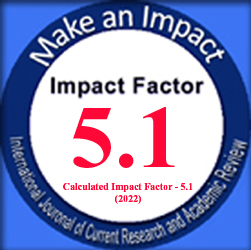Abstract Volume:4 Issue-4 Year-2016 Original Research Articles
 |
Online ISSN : 2347 - 3215 Issues : 12 per year Publisher : Excellent Publishers Email : editorijcret@gmail.com |
The increasing rate of agricultural wastes due to the large scale of urbanization and a consequence of economic development has become a problem that produces the huge quantities of waste in India and causes a serious environmental problem which is difficult for management. Management of agricultural waste has become one of the biggest problems. Vermicomposting is the best option to deal with this problem. Vermicomposting involves stabilization of organic waste through the joint action of earthworms and aerobic micro-organisms. Vermicomposting is environment friendly and cost effective technique for agricultural waste. Vermicompost is better option for the chemical fertilizer because it is not associated with any kind of pollution. Agricultural waste such as Paddy straw selected for the present research work, it was pre-decomposed for 40 days followed by subsequent vermicomposting for 30 days. Earthworms are capable of transforming of garbage into gold. Eisenia foetida is the most commonly used species of earthworm for vermicomposting. Temperature maintained at 26oC with the moisture content of 60-80%. Earthworm’s breakdown organic matter and leaves behind castings that are an exceptionally valuable fertilizer. Physico-chemical analysis shown decreased in TOC, C:N ratio and increased in NPK content of the vermicompost compared to compost and initial agricultural waste (Paddy straw). Vermicomposting has many applications in crop improvement such as pathogen destruction, water holding capacity of soil, improved crop growth and yield, improved soil physical, chemical and biological properties and production of plant growth regulators.
How to cite this article:
Maya M. Jaybhaye and Satish A. Bhalerao. 2016. Vermicomposting: A New Trend Towards Management of Agricultural Waste (Paddy Straw)Int.J.Curr.Res.Aca.Rev. 4(4): 61-67doi: http://dx.doi.org/10.20546/ijcrar.2016.404.007



Quick Navigation
- Print Article
- Full Text PDF
- How to Cite this Article
- on Google
- on Google Scholor
- Citation Alert By Google Scholar
